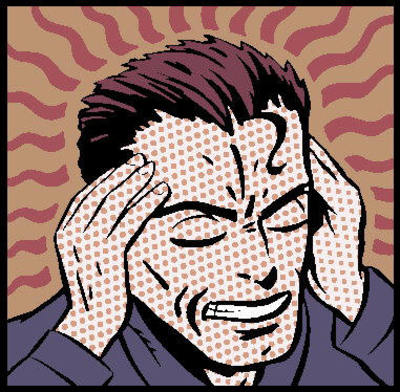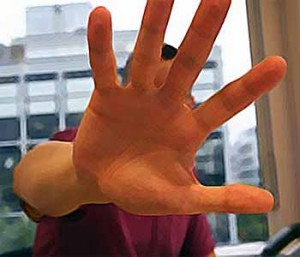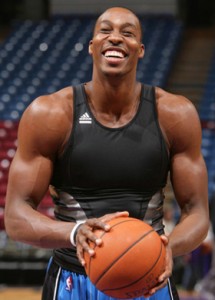 Denial still frames American perspective on sport doping, and we party on over our games.
Denial still frames American perspective on sport doping, and we party on over our games.
And that’s the sure sign nothing is forthcoming to reverse widespread use of anabolic steroids, human growth hormone, and more tissue-building substances in sport.
Muscle doping’s progress continues unabated despite decades of testing, anti-steroid education, blockbuster scandal, public bitching, and politicians’ posing as saviors. Football, for example, can celebrate 50 years of anabolic steroids based on the 1959 case of a high-school team in Texas, juiced with Dianabol by a doctor, according to Dr. Charles Yesalis, epidemiologist and drug historian.
Muscle substances remain rampant in sport from preps to pros, conclude Yesalis and front-line authorities such as personal trainers Leo Costa Jr. and Sal Marinello.
“I’m not saying it’s right or wrong,” says Costa, a former pro bodybuilder in California who pleaded no contest to a charge of steroids possession in 1999. “It’s up to the individual.” Costa told The Tulare Advance-Register that he doesn’t use steroids.
Marinello rejected ‘roids in the 1980s as a college football player and weightlifter, and he criticizes doping today as trainer and writer based in New Jersey. But Marinello concedes the virtual hopelessness to change cultural craving for performance-enhancing substances [PES].
Thus the denial really irks him. “If guys wanna do it, let them do it, but I always say, ‘Ya know what, don’t tell me you’re doing it naturally,’ ” Marinello says. “Don’t send the message that you’re just like anybody else, especially to kids.”
“Don’t tell us you’re a better athlete than somebody else when all you’re doing is taking these drugs to get better. If people wanna [juice], that’s a different argument. Let’s just recognize first that they’re using and what it’s done for them.”
As Marinello contends, to present the illusion of improbable natural gains can harm aspiring athletes, particularly young football players, because they’ve known what’s up for decades.
 Sport media avoid obvious questions
Sport media avoid obvious questions
Media always struggle to accurately portray extent of PES abuse in athletics, and rightfully so, but many journalists continue their carelessness, a half-century after Dianabol’s release. Smoking-gun evidence of doping is indeed rare, but sportswriters and editors take that as excuse to ignore everything, even if their stories mislead children and parents.
The Kansas City Star avoids glaring questions that stalk its subjects of teams and athletes, especially in football and baseball. The newspaper’s award-winning Sports section routinely glorifies absurd weight gains of football players at regional colleges.
In the past month, The Star profiled three college players who reached massive size to become NFL prospects. Two of the stories made central theme of suspicious weight gains, proclaiming in headlines that one player “grew up” 76 pounds while the other “transformed” to add 100, all post-puberty, at college. No story remotely mentioned the possibility of muscle doping involving the three players.
I used steroids as a college football player in 1982, when the drugs swept through the NCAA game at all levels, and irreversibly. I’m convinced of what I’m seeing. Yet I’ve been guilty as any scribe for overlooking evidence of drugs in young athletes. At least that’s in my past.
Unbridled sport doping is driven by societal denial, especially on part of news media, and that’s a major reason I won’t work again in daily sportswriting. The same factor once spurred me to quit coaching football.
The see-no-evil routine is disingenuous for any writer or coach, particularly in this time of acute awareness for doping’s pervasiveness. If you can’t speak up, or at least question suspicious activity, consider another job.
Stillness surrounds, swallows most exposures or allegations
While America dissects doper superstars in baseball–currently Manny Ramirez and Alex Rodriguez–we care nothing for countless fly-by cases in news and blogger space.
In college football, Oklahoma State officials, the Big 12 Conference, and the NCAA are curiously mum over the arrest of senior Cowboys wideout Bo Bowling, charged with possessing drugs that include stanozolol, the detectable, potent steroid that regularly shows in NCAA sports regardless of testing. Bowling, 21, is scheduled for arraignment today.
OSU football coach Mike Gundy says he won’t decide Bowling’s status until after court proceedings. Otherwise, he declines comment, along with officials of the athletic department and university, reports The Stillwater NewsPress. And NCAA Enforcement won’t investigate, as usual when the topic is drugs.
The NCAA hasn’t probed numerous football programs with players arrested for or positively tied to steroids this decade, large and small schools, including Louisiana State, Oregon State, Tennessee-Martin, Dartmouth, Maine, Air Force, Navy, Delaware, Mississippi, Arizona State, Wisconsin-Stout, Arkansas, Central Connecticut State, USC, Idaho, Texas, Iowa, Tennessee, East Carolina, Oklahoma, and more. Steroid allegations surfaced against coaches at San Diego State while police found steroid pills in the car of a Michigan strength coach during a traffic stop [a possession charge was later dropped].
In men’s basketball, today’s college game stuns observers for muscle-bound players covering the court, and experts such as Yesalis see a definite problem with drugs. Indeed, some dummies in NCAA hoops test positive for steroids each year, even though the urinalysis is laughable.
 But the NBA is outrageous for its physiques, has been since the late 1980s, and allegations recently hit three stars within a week, one a retiree.
But the NBA is outrageous for its physiques, has been since the late 1980s, and allegations recently hit three stars within a week, one a retiree.
Former Nets forward Jayson Williams wigged-out alone in a Manhattan hotel room, scribbling suicide notes and consuming drugs before police hauled him to a hospital. Williams faces retrial on a manslaughter charge for shooting his chauffeur in 2002, and a marriage breakup, but his troubles also apparently include script drugs like growth hormone. Empty HGH vials and needle syringes were found in the room, among narcotics and paraphernalia, The New York Daily News reports.
Meanwhile, bloggers speculate over Magic forward Dwight Howard, his before-and-after photos displaying massive muscle gain in recent years, and a direct accusation surfaced in Miami against NBA superstar Dwayne Wade, of the Heat. Wade and a former business partner, Richard von Houtman, are waging a media and legal battle over the ashes of their failed ventures.
Von Houtman has accused Wade of marijuana use, among allegations the athlete’s reps label “fairy tales,” and in April the angry former partner brought muscle dope into the public discussion.
Speaking with writer Gus Garcia-Roberts of The Miami New Times, Von Houtman, a bodybuilder, said, “Dwayne has all of the signs of a steroid user, besides from the fact that he asked to buy steroids from me, twice. Because I was using [Deca-Durabolin] for my rotator cuff.” Von Houton, claiming “I’m not a steroid user,” said he referred Wade to his doctor for a possible prescription.
Those comments are news by any journalistic measure, particularly given Wade’s national celebrity and his current situation off-court. The information, true or false, requires further examination in public.
Debate dwells in obscurity online, however, confined to blogs and other posts. Among mainstream opinion brokers, no one questions Wade or Von Houton. Not the league, not the Heat nor mainstream sportswriters. They just continue to extol and promote Wade for his athletic prowess, which not coincidentally means financial return for them, in the business synergy of sport organizers and partner media.
And that is silence bound by money, the unyielding non-denial denial.

Click here to purchase Matt Chaney’s latest book
